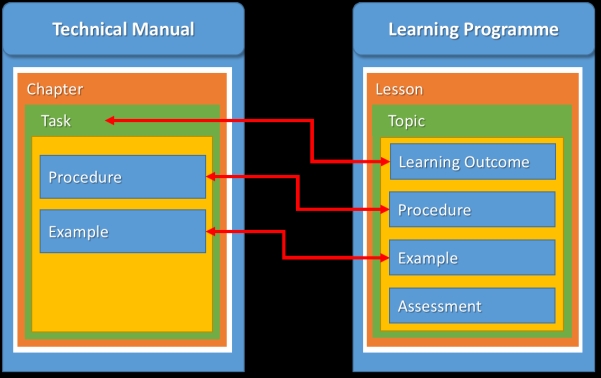Aligning training and technical documentation
Training manuals and technical manuals are an integral part of the logistic engineering process, says Walog Training Development.
In today’s fast-paced business world, success is dependent on how efficiently and effectively an organisation can employ and manage its information.
Companies that produce technical products and services must also produce a wide variety of customer-facing information products, including printed training materials, Web-based courseware, technical
documentation and performance support tools.
Technical documentation is used in many areas of everyday life. Nearly everything has to be provided with, at minimum, a drawing, including a few locators. The product liability and many other issues regarding consumer protection have to be covered inside technical documentation. As users turn to these various information products, they are frequently confused because the information found in them can be conflicting, inconsistent, and of varying quality, leaving them guessing which source is to be trusted.
Training manuals and technical manuals are an integral part of the logistic engineering process. In fact, every logistic element is an integral part of the other; for example, training is required for every element and so are the other elements, interrelated with each other. See figure 1.
Figure 1: ILS approach
 Various solutions evolved over the years to try and eradicate this business problem, ie:
Various solutions evolved over the years to try and eradicate this business problem, ie:
1. Applying a documentation management system. This enables organisations to ensure and securely manage, organise and share documents. This shows that a document management system should be in place to effectively manage information and knowledge. In fact, an electronic
document management system (EDMS) is one of the tools used to manage information and knowledge.
2. Establishing an in-house relational database. This is a digital database based on the relational model of data which uses SQL (Structured Query Language) for querying and maintaining the database. Some software developers have gone as far as to start publishing from these databases,
with the objective of sharing information.
3. Applying XML technologies: a special form of technical documentation is electronic technical documentation, a further sub-form is interactive electronic technical documentation (IETD). The complexity of IETD especially regarding the huge mass of data elements, their linkage and the version management issuing and release process, must be controlled via a special document management system.
To handle these complex structures of ASD S1000D IETDs, the Common Source Data Base is necessary.
 The ability to re-use the same content within different publication types and delivery modalities depends on the content being created and stored. For example, a procedure initially authored in a technical manual must be stored as a discrete object apart from the technical manual that references it. This way, the procedure object can also be referenced by a technical manual as well as a Web-based course or performance support system.
The ability to re-use the same content within different publication types and delivery modalities depends on the content being created and stored. For example, a procedure initially authored in a technical manual must be stored as a discrete object apart from the technical manual that references it. This way, the procedure object can also be referenced by a technical manual as well as a Web-based course or performance support system.
Figure 2: Training and technical manual interfacing
The illustration depicts how the same task, procedure and example objects are referenced within a technical manual and a learning programme.
The solution lies in a single source of “trusted” content from which all information products that cover the same subject matter can be generated, or a single point of responsibility to manage the information and the management of people (knowledge management). Knowledge cannot be managed directly, only the information about the knowledge possessed by people in organisations can be managed. Good information management is seen as the essential prerequisite for knowledge management.


